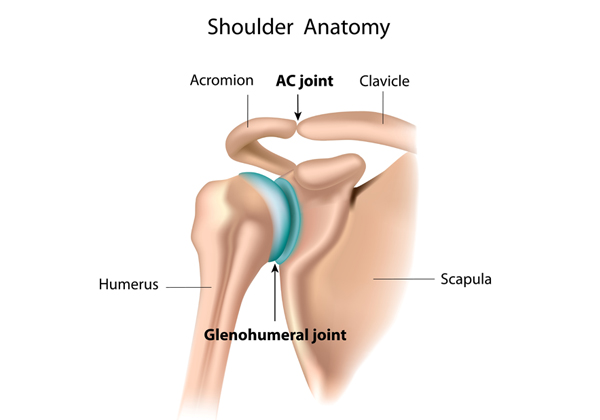Shoulder Joint Instability
An Overview
- Shoulder instability usually occurs when the lining of the shoulder joint (the capsule), ligaments or labrum become stretched, torn or detached, allowing the ball of the shoulder joint (humeral head) to move either completely or partially out of the socket
- Individuals with shoulder instability usually feel pain when the shoulder “gives way”
- Diagnosing shoulder instability includes a physical exam and X-rays to determine the cause of the shoulder instability or to rule out other causes of shoulder pain
- Treatment for shoulder instability includes both non-operative and surgical options
Anatomy
- The shoulder is a ball-and-socket type of joint that permits a wide range of movement
- Its bony structures includes the upper arm bone (the humerus) and the shallow cavity (the glenoid) of the shoulder blade
- The ball of the humerus (humeral head) is meant to stay close to the socket, like a ball bearing in a holder
- The humeral head is held into the socket by the lining of the joint (the capsule), thickenings of the capsule called ligaments and a cartilage rim or bumper of the shoulder ( labrum)
Causes
- It occurs when the head of the upper arm bone is forced out of the shoulder socket as it traumatic and sporting injuries
- It can happen by a direct blow to the shoulder or in patients with epilepsy
- The shoulder can come partially out of socket or it can completely come out in which case it will need medical attention
- It can be a recurring problem in patients who are hypermobile.For these people, instability can occur without any trauma or following relatively minor injury
- Repeated episodes of subluxations or dislocations can increase the risk of developing arthritis in the joint
- Medical attention is required to assess muscles and ligaments around the joint and may then need physiotherapy or in some cases surgery
Symptoms
- People with instability of the shoulder joint can sometimes feel the ball of the shoulder come out of its socket or “give way”
- This is commonly associated with pain
- Often, the episodes of giving way occur with specific activities or positions of the arm, such as throwing a ball or reaching behind the body
- Additional symptoms can include a decreased range of arm/shoulder motion, swelling and bruising
Diagnosis
- A complete history and physical examination is done by a physician
- The examination includes palpation to check for points of tenderness as well as a determination of range of motion and strength
- The degree of shoulder looseness or laxity of the shoulder joint can also be assessed by specific tests during the examination
- X-rays are usually done to obtain information about the possible causes of the instability and to rule out other causes of shoulder pain, such as a fracture
- Magnetic resonance imaging (MRI) scan or a dye test (arthrogram) with or without a computed tomography (CT) scan, are occasionally done to further evaluate the bones and tissues of the shoulder joint
- However, these scans are not required in all patients with instability
Treatment
If left untreated, Young patients may complain of shoulder instability and recurrent dislocations. This group of patients would require either a keyhole ( arthroscopic stabilization surgery of if they have had recurrence after a keyhole surgery, this would require a bony procedure (Bone block or Laterjet procedure) to prevent further dislocations.

